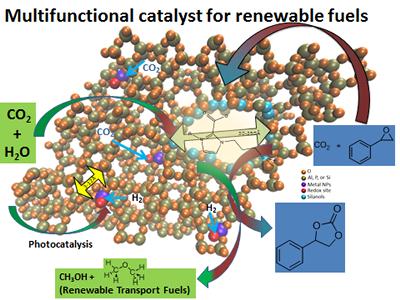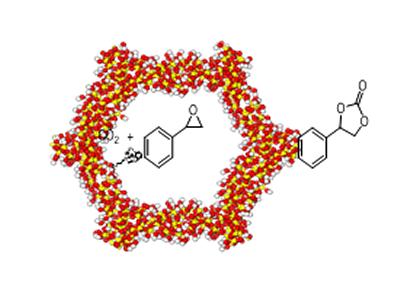
Heterogeneous organocatalysts
The production of mono and polycarbonates are a rapidly expanding field within CO2 utilisation. Dr Robert Raja, Associate Professor in Energy Materials and Catalysis, and Co-Chair of the Clean Carbon Strategic Group, and his research team investigate design strategies for anchoring organocatalysts on high-surface area supports and substrates that lead to the creation of isolated , high surface-to-volume ratio single sites for the conversion of epoxides to monocarbonates via CO2 incorporation. Synergistic effects between the support and organocatalyst activity are observed due to site isolation.
Hierarchical architectures
Our patented hierarchical architectures contain micropores (3-15 Å) that are intrinsically interconnected with mesopores (25-250 Å) with high surface areas (>2100 m2/g) and high thermal stability (1200 ºC). The mesopores are lined with pendant silanol groups that can be functionalized with catalytically active centers (e.g. carbenes, imidazoles) that have already displayed high TON for the direct utilization of CO2 to produce polycarbonates. The ability to design catalytically active single-sites at the nanoscale with a specific tailored catalytic function and high degree of multifunctionality offers significant advantages when compared with other oxide catalysts (e.g. TiO2), which do not offer the same degree of tunability or reactivity.

